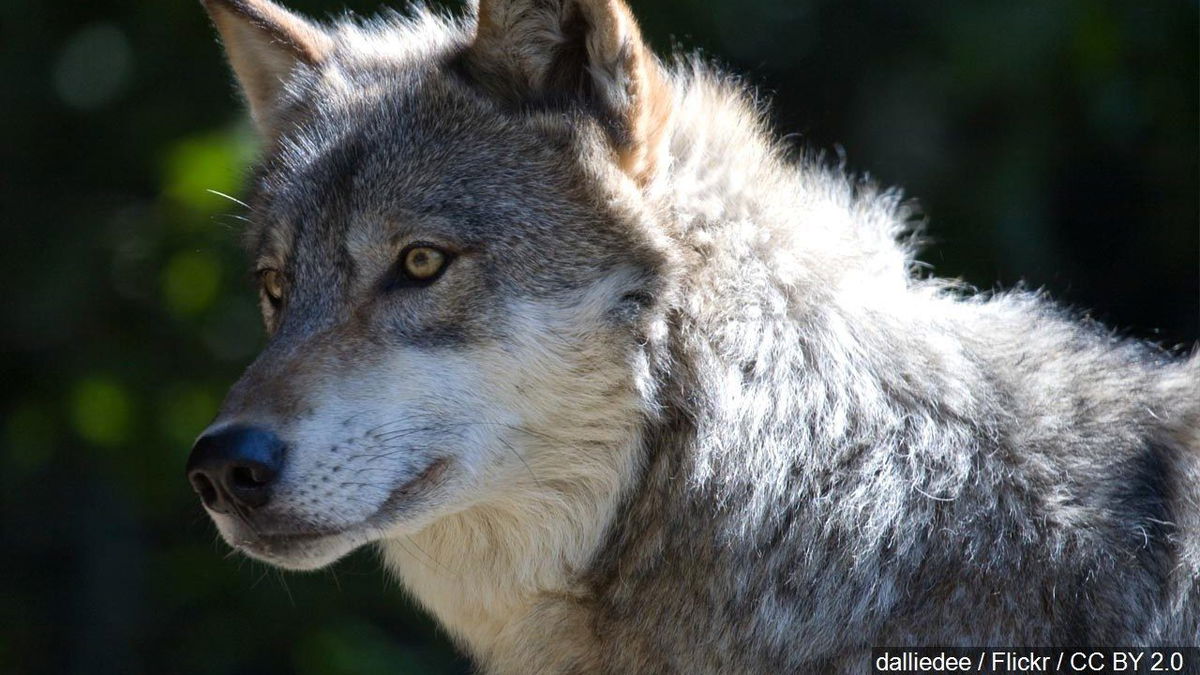Idaho wolf population is estimated at 1,000 animals

BOISE, Idaho (AP) - The director of the Idaho Department of Fish and Game on Thursday said there are an estimated 1,000 wolves in Idaho.
Ed Schriever told the House Resources and Conservation Committee that the estimate made public for the first time is the first wolf population estimate in Idaho since 2015.
"We will be making that estimate every year, and we will know from this point forward if the population is going up, as some people speculate, if it's been level, or if it's decreasing," Shriever told lawmakers.
Shriever said the wolf population peaked early in the summer of 2019 at about 1,500 following the birth of pups. He said subtracting hunting and trapping kills along with other deaths puts the population now closer to 1,000.
After the meeting, Schriever said the estimate is based on about 13 million photos from nearly 700 remote cameras combined with known wolf mortality numbers. Computer software is needed to sort through the photos and count wolves, he said.
"This is expensive, and it's time-consuming for staff to get the cameras out and retrieve the cameras and analyze the data," he said. "But we think it's really important. It's really important in demonstrating to the public our ability to manage this population through time."
Fish and Game took over management of wolves from the U.S. Fish and Wildlife Service in 2011 when wolves were removed from the Endangered Species List. But the state had a five-year requirement to track of wolf populations, which it did using radio collars. The agency stopped tracking wolf numbers after the five-year population estimate requirement ended.
But without solid numbers, the agency was open to criticism from those who thought wolf numbers were skyrocketing and others who thought they were crashing.
"It's more important from the people side of the management of an animal that is very controversial because, without a number that you can track over time, people just speculate based on their belief window," Shriever said.
Republican Rep. Judy Boyle is among many Republican lawmakers who say there are too many wolves.
"Can you explain what you're doing to bring down wolf numbers?" she asked Shriever.
He said the Fish and Game Commission has been expanding hunting and trapping seasons, noting in particular extending the trapping season a month earlier to Oct. 10, allowing foothold traps to be more effective because of less snow and freezing to the ground.
Shriever said that led to 138 wolves being trapped last fall compared with the previous average trapping harvest of 55.
With those factors combined, he said, "We will likely achieve the highest harvest by hunting and trapping since delisting in 2011," he said.
In addition, committees in both the House and Senate have approved changes to using snares that are expected to dramatically increase the number of snares being used and result in additional wolves being killed.
In a related matter, the Senate Resources and Environment Committee on Wednesday voted to clear the way for a hearing on the creation of wolf-free zones and wolf-depredation zones in the state that's intended to protect the livelihood of ranchers.






